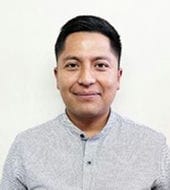Process of Manufacturing Footwear with Authentic Lamb’s Wool Fiber in the Salasaka Culture
Main Article Content
Abstract
The research project focused on the development of a collection of women's footwear using natural fiber from sheep wool of the Salasaka culture, this collection was made through hand weaving and looms. it is descriptive research, with a quantitative approach, for the collection of information and data. Prior to this, prototypes were designed and created using natural fiber from sheep. Sixty-eight people were surveyed, and 72% indicated that sheep wool can be used as a material for shoehorn manufacture. In addition, 60% stated that this type of woven footwear is innovative, and 90% would be willing to purchase it. Based on this, this product was developed by combining materials such as wool and looms, which attract the consumer's attention due to their colors and, above all, their co-modality. It is important to know the profile of the consumer to whom this footwear is directed, as well as the needs it satisfies. In conclusion, the research project strengthens the eco-nomy and generates new sources of employment, promoting the development and growth of the Salasaka culture.
Downloads
Article Details

This work is licensed under a Creative Commons Attribution-NonCommercial-ShareAlike 4.0 International License.
1. Derechos de autor
Las obras que se publican en 593 Digital Publisher CEIT están sujetas a los siguientes términos:
1.1. 593 Digital Publisher CEIT, conserva los derechos patrimoniales (copyright) de las obras publicadas, favorece y permite la reutilización de las mismas bajo la licencia Licencia Creative Commons 4.0 de Reconocimiento-NoComercial-CompartirIgual 4.0, por lo cual se pueden copiar, usar, difundir, transmitir y exponer públicamente, siempre que:
1.1.a. Se cite la autoría y fuente original de su publicación (revista, editorial, URL).
1.1.b. No se usen para fines comerciales u onerosos.
1.1.c. Se mencione la existencia y especificaciones de esta licencia de uso.
References
Álvarez, R. (Julio de 2012). Diseño de calzado aplicando tejidos autóctonos de Otavalo y accesorios de tagua. Obtenido de Universidad Tecnológica Equinoccial Facultad de Arquitectura
Blog. (28 de Abril de 2015). Obtenido de La importancia del packaging en el marketing
Cajiao, D. (2013). Diseño de Calzado Sustentable a partir de la identidad cultural Andina, producido por Pymes familiares para un mercado global. Caso de Estudio: Taller Guiti/Machachi. Obtenido de Universidad Católica del Ecuador: http://repositorio.puce.edu.ec/bitstream/handle/22000/5818/T-PUCE- 5982.pdf?sequence=1&isAllowed=y.
Castellano, G. (5 de Marzo de 2018). Tendencias. Obtenido de El tejido salasaka se conserva en Tungurahua:
Comercio, E. (8 de Enero de 2019). Obtenido de Las artesanías de Otavalo pierden espacio dentro y fuera del Ecuador
Creadess. (19 de Septiembre de 2012). Conozca 3 tipos de investigación: Descriptiva, Exploratoria y Explicativa.
Chic, S. (24 de Marzo de 2010). Obtenido de Montaje de calzado: http://montajedecalzado.blogspot.com/
Caballero, F. (2023). Preocupaciones sobre el hurto de animales y su impacto en la producción de lana y los productos textiles en Salasaka. Revista de Estudios Textiles, 45-50
González, M. (2021). La evolución de la producción de calzado: Integración de elementos naturales y tecnología. Revista de Investigación en Moda y Calzado, 10(2), 45-57.
Martínez, L. (2019). La importancia cultural y tecnológica de la lana de borrego en la fabricación de calzado. Memorias del Congreso Internacional de Calzado y Moda, 35-42.
Méndez, B. (Octubre de 2018). Creación de una microempresa de producción y comercialización de zapatos tejidos a crochet para niñas, en la cuidad de Otavalo, provincia de Imbabura. Obtenido de Universidad Técnica Del Norte: http://repositorio.utn.edu.ec/handle/123456789/8729
Milpies. (12 de Marzo de 2019). Cómo se hacen los zapatos. Obtenido de Conoce los pasos para la elaboración de los zapatos: https://www.milpies.es/zapatos/blog/tendencias/fabricacion-de-calzado- artesanal/
Pablo, R. (Marzo de 28 de 2011). Zapateros y Zapatos. Obtenido de Clase 1 de modelaje de calzado: http://zapaterosyzapatos.blogspot.com/2011/03/clase-1-de- modelaje-de-calzado.html
Pérez, M. (2023). Conservación de tradiciones y costumbres en una comunidad cercana a Ambato. Revista de Turismo y Cultura, 10(2), 45-60.
Pensante. (2016). La investigación documental: Recopilando datos e información para el desarrollo de la investigación científica. En Pensamientos de Investigación (pp. 123-145).
QuimiNet. (1 de Febrero de 2017). El proceso para fabricar calzado. Obtenido de https://www.quiminet.com/articulos/el-proceso-para-fabricar-calzado-18313.htm
Rodríguez, I. (28 de Abril de 2016). Lodi. Obtenido de Sección de cortado: https://reinventandoelcalzado.es/seccion-de-cortado-lodi/
Sánchez, M. (2023). Implementación de la lana de borrego en la fabricación de calzado en la parroquia Salasaka del cantón Pelileo. Revista de Estudios Culturales y Sociales, 12(2), 78-92.
Significados. (21 de Noviembre de 2016). Obtenido de Significado de Metodología de la investigación: https://www.significados.com/metodologia-de-la-investigacion/
Ucha, F. (15 de Diciembre de 2008). Obtenido de Encuesta: https://www.definicionabc.com/comunicacion/encuesta.php
Vargas, A. (2022). Preservación del trabajo con lana en la comunidad Salasaka: Un enfoque hacia la salvaguardia cultural. Revista de Estudios Culturales, 15(3), 78-92.





